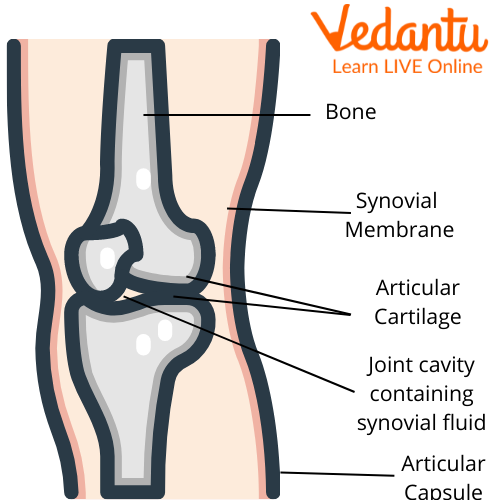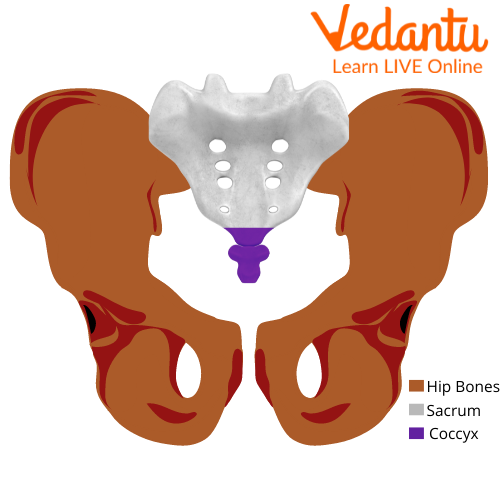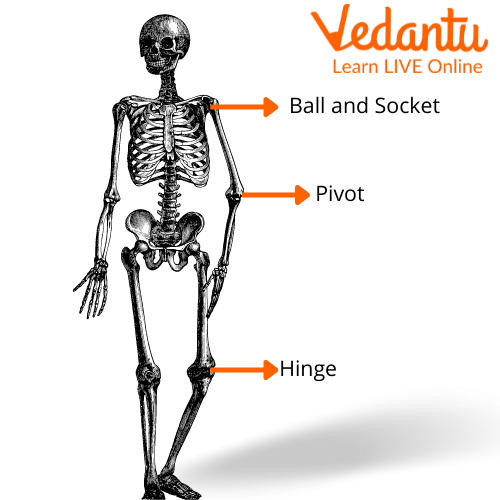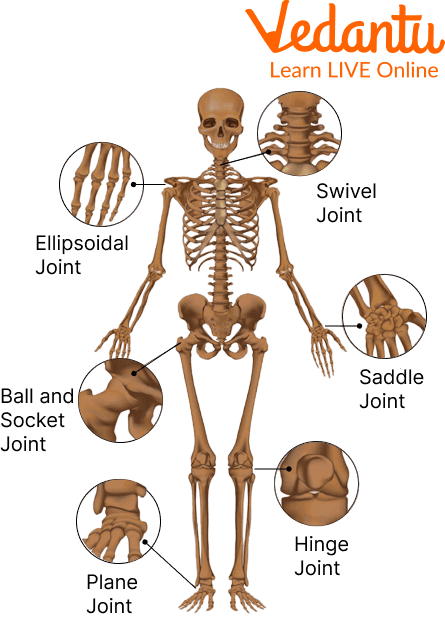




An Introduction to Joints in the Human Body
Have you ever thought about what makes your body flexible? How is it that you can move, bend your knee, or hand, or turn your head? How does your body do all these activities? The answer can be understood with the help of the number of joints present in the body.
As we know, there are 360 joints in the human body. The human body is an amazing machine with 270 bones at birth, which decreases to 206 as we age as parts of our bones fuse together. Thus, there are 360 joints in our body, connecting one bone to another.
Here, we will learn about what joints are, where they are found in our body and the types of joints in the body.
What Are Joints?
Joints in the human body provide flexibility. Basically, it’s the condition of being bent. It absorbs all the forces while walking and running. Joints help to hold the skeleton together and because of this, we are able to move. For example, ball and socket joints help in movement, walking, jumping, etc.

Joints
Types of Joints in the Body
Joints can be categorised by their function of motion. There are basically three types of joints in the body on the basis of motion.
● Immovable Joints (Synarthroses) - It is basically the joints present between the first pair of sternum and ribs, and it is also the articulations between the mandible and teeth. It is also called fixed joints. Examples- articulations of bony sockets, skull sutures, and teeth in the facial skeleton.

Fixed Joints

Immovable Joint
● Slight Movement Joints (Amphiarthrosis) - The joint at some distance between the fibula, tibia, and pubic symphysis of the pelvic girdle. Examples – distal joint present between the tibia and fibula and pubic symphysis. It allows little movement for the extent of movement it needs to be diarthrosis.

The Pubic Symphysis
● Full Movement Joints (Diarthrosis) - In our body, we have bone articulations in the upper and lower limbs, here we have the best movement in terms of Joints. These are called movable joints. Examples- elbow (pivot joint), shoulder (ball and socket joint), and ankle (hinge joint) are the perfect examples.

Movable Joints
Joints By Their Structure
● Fibrous Joints – There is a thick connective tissue present in the articulations of fibrous joints which leads to a maximum of them in an immovable condition but there are some types of fibrous joints that are movable.Below given are examples of three fibrous joints.
Sutures – These types of joints basically have saw-like edges that are fixed and locked together with fibres of connective tissue. They are non-movable only because of their saw-like edges.
Gomphoses – We have fibrous articulations present between the maxilla or mandible and the teeth; they are also immovable joints.
Syndesmosis – These are the joints where only a little movement is possible; we have a ligament that connects two bones together which allows them to do a little movement. The joint between the fibula and the tibia bone is a perfect example of syndesmosis.
● Cartilaginous Joints – The joints that help to connect bones with the help of cartilage are called cartilaginous joints. Here we have two types of cartilaginous joints:
Synchronous – It is basically a non-movable cartilaginous joint present in our body, the easiest example is the first pair of ribs and sternum.
Symphysis – It is basically a type of compressible fibrocartilaginous pad which helps in connecting two bones. The hip bones joined with the pubic symphysis is a perfect example of the symphysis. It also takes us to the conclusion that these types of joints have some movement capabilities. Here we have another example that the vertebrae, connected by intervertebral discs.
● Synovial / Movable Joints
In this joint, the uppermost layer of bones is covered by an articular cartilage coating. The surrounding ligaments help by supporting the synovial joints, which helps to prevent injury by limiting movement. We have six types of synovial/movable joints present in our body. Now, the question arises:
What is the role of movable joints in the body?
The role of movable joints in our body with all six types are given below:

Movable Joints in the Human Body
Gliding Joints- These types of joints move against each other in the same (single) plane. Some examples are the bones of wrists and ankles, it also includes intervertebral joints.
Hinge Joints – These types of joints have both flexion and extension. They only need one axis to move. The perfect examples of these are elbow and finger joints.
Pivot Joints – These basically provide rotation, the atlas, and the axis from the pivot joint used in the rotation of the head.
Condyloid Joint- This type of joint helps in flexion, extension, and circular motion. A perfect example is the radius and the carpal bones in the wrist joint.
Saddle Joint – It has no rotation but it has flexion, extension, and other similar movements, the perfect example is the thumb’s saddle joint present between the metacarpal and trapezium which helps the thumb cross over the palm and makes it opposable.
Ball and Socket Joint – It might be considered the best joint because it can rotate on any axis. Examples are shoulder and hip joints.
Summary
The joints in the skeleton keep it all together. A joint, which also absorbs all the stresses produced by walking and running, provides flexion, which is essentially the state of being bent. A joint is a place where two different bones in our body meet. The number of joints present in the body of a human being is 360.
The bones are kept so firmly in place in fixed joints that they are completely immobile. Moveable joints are joints that permit motions in multiple directions. For example, movement in every direction is possible with a ball and socket. Our head can rotate to the left or the right thanks to the pivot joint.
FAQs on Joints in the Human Body
1. What are immovable joints?
In immovable joints, the bones are unable to move that’s why it is sometimes referred to as synarthroses or fixed joints. As they hold two body parts together and prevent their movement, immovable joints are the fixed joints that give stability to the body parts. The presence of thick collagen in these immovable joints serves as a tight bond between the body parts. As the name refers, immovable joints don’t allow any movement and they don’t have joint cavities either.
An example of immovable joints is skull sutures.
2. How many types of bones are present in the human body?
Basically we have two types of joints in our body. These are Immovable or fixed joints and Movable joints. In fixed joints, the bones are held so tightly that they cannot move at all. For example, joints in the skull, upper jaw, etc. The joints that allow movement in different directions are known as movable joints. For example, ball and socket, hinge joints, and pivot joints.
3. Give an example of a joint.
Your hip and shoulder joints are two examples. Your knee and elbow joints are the other two examples.
4. What are the functions of joints and where are the joints in your body?
A joint's main function is to make the human body more mobile. The stability of the head and pelvis, skeletal flexibility, and control of muscle movement at a joint are some other tasks performed by joints.
A joint is the part of the body where two or more bones meet to allow movement.









